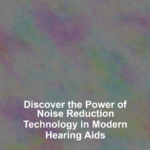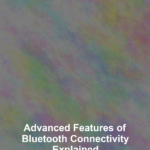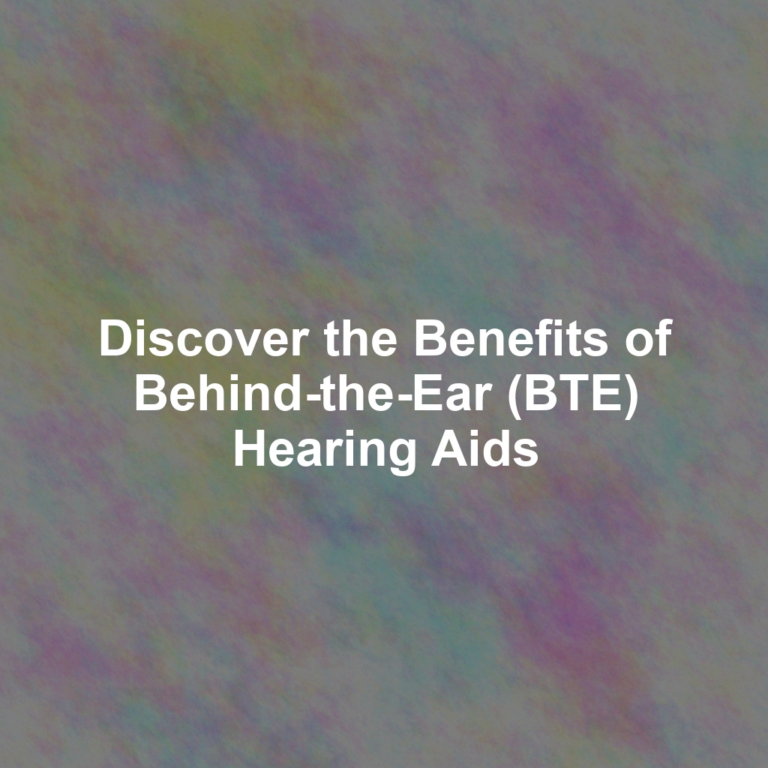Just as Odysseus navigated the SirensG?? songs, youG??re faced with the challenge of discerning important sounds amid a cacophony of noise.
Modern hearing aids have evolved to be more than mere amplifiers; theyG??re now sophisticated devices equipped with advanced noise reduction technology designed to enhance your auditory experience.
YouG??ll find that the latest models can differentiate between noise and speech, allowing for clearer conversations even in bustling environments. The digital signal processing at their core is fine-tuned to your individual needs, a far cry from the rudimentary devices of the past.
As you consider the leap to these cutting-edge aids, itG??s crucial to understand the key features that set them apart and how they can significantly improve your quality of life. But before you make any decisions, letG??s first unpack the intricate details behind the technology that could redefine your auditory world.
Understanding Noise Reduction
To appreciate how modern hearing aids enhance communication, itG??s crucial to understand how they differentiate between speech and unwanted noise. These sophisticated devices use algorithms to analyze sounds, prioritizing human speech while reducing background noise. Think of a crowded restaurant; youG??re trying to focus on your friendG??s story, but the clatter of dishes and chatter around you make it tough. ThatG??s where your hearing aidG??s noise reduction feature kicks in.
It works by recognizing the consistent, predictable patterns of noise, such as the hum of an air conditioner, and then it minimizes them. This isnG??t just about volumeG??itG??s about clarity. The aim isnG??t to eliminate all background noise, which can make conversations sound unnatural, but to reduce it to a level where itG??s less of a distraction.
This tech has become smarter over time. Now, hearing aids can adapt to your environment in real-time, tweaking settings as the noise around you changes. They also learn from your preferences, getting better at delivering the sounds you want to hear. So, youG??re not just hearing more; youG??re understanding better. ThatG??s the power of modern noise reduction in hearing aids.
Key Features of Advanced Aids
Equipped with cutting-edge technology, advanced hearing aids offer features like directional microphones, wireless connectivity, and personalized hearing profiles to enhance your auditory experience. Directional microphones focus on the sounds coming from in front of you, which is often where the person youG??re conversing with is located. This means you can engage in conversations even in noisy environments as these microphones help to reduce background noise.
YouG??ll also appreciate the wireless connectivity that allows your hearing aids to interface directly with smartphones, TVs, and other devices. You can stream audio straight to your ears without any external gadgets. ItG??s as if youG??re wearing high-end headphones that are tailored specifically for your hearing needs.
Furthermore, your hearing aids can now learn and adapt. With personalized hearing profiles, they adjust to various environments by remembering your preferences. So, whether youG??re in a bustling restaurant or a quiet library, they automatically tweak their settings to give you the best possible listening experience.
And letG??s not overlook the rechargeable batteries that power these advanced devices. Gone are the days of fumbling with tiny batteries. Now, you simply charge your hearing aids overnight, and youG??re set for the day. ItG??s convenience and sophistication wrapped into one tiny package designed just for you.
Digital Signal Processing
Building on the advanced features of modern hearing aids, digital signal processing (DSP) stands out as a core technology that fine-tunes your auditory experience to your individual needs. At its heart, DSP transforms the analog sound waves from your environment into digital format, allowing for complex processing that analog systems canG??t match. ItG??s like having a mini computer in your ear thatG??s constantly optimizing sounds so that you can hear them more clearly.
Your hearing aid uses DSP to analyze and adjust sound in real-time. It can amplify speech while simultaneously reducing background noise, making it easier for you to focus on conversations even in noisy settings like restaurants or city streets. The technology also enables features like feedback suppression, which prevents that annoying whistling sound that used to be a common complaint with older hearing aids.
WhatG??s more, DSP allows for personalization. Your hearing professional can program your device to match your specific hearing loss profile, adjusting frequencies and intensity to compensate for areas where your hearing is weakest. And as your hearing changes, the programming can be updated to ensure youG??re always getting the most out of your device. With DSP, youG??re not just hearing better; youG??re hearing smarter.
Directional Microphone Systems
Directional microphone systems in your hearing aid selectively amplify sounds from specific directions, enhancing your ability to focus on the conversation in front of you while diminishing background noise. This is crucial in environments where competing sounds can overwhelm the speech youG??re trying to hear.
HereG??s how it works: Your hearing aid has multiple microphones. These microphones pick up sounds from various angles. The device then uses algorithms to determine which sounds are noise and which are speech based on their direction and amplifies the latter. This means when someoneG??s talking to you face-to-face, their voice is prioritized over the chatter from the sides or behind.
But donG??t worry about being cut off from your surroundings. You can switch to an omnidirectional mode when you need to hear sounds from all directions, like when youG??re walking in a park or at a family gathering. Some advanced models even adjust automatically, shifting between directional and omnidirectional modes based on your environment.
Real-World Benefits
Understanding how the directional microphone systems in your hearing aid prioritize speech over noise leads us to appreciate the tangible advantages they bring to everyday life. YouG??re no longer sidelined in social settings; instead, youG??re right in the mix, engaging with friends and loved ones without straining to follow the conversation. This isnG??t just about comfort; itG??s about connection.
With advanced noise reduction, youG??re not constantly battling background chatter at restaurants. YouG??re free to focus on the flavors and the company, transforming a meal out from a challenge into a pleasure. ItG??s not just dining out thatG??s improved, either. Think about work meetings where youG??re now catching every critical detail. YouG??re not just nodding alongG??youG??re an active participant, contributing confidently because you can hear whatG??s being said.
And itG??s not all about the social and professional either. Even a simple walk in the park is richer when your hearing aids filter out intrusive traffic noise, allowing the subtle sounds of nature to come through. YouG??re living life fuller, with a soundscape tailored to your needs.
Conclusion
With modern hearing aids, youG??re not just amplifying sound; youG??re stepping into a world where noise doesnG??t drown out life. Thanks to digital signal processing and directional microphones, your device smartly tunes out the chaos, letting conversations take center stage.
So, youG??ll enjoy the chatter at dinner parties without the background buzz. Embrace the clarity these advanced aids bring G?? theyG??re not just hearing aids, theyG??re your ticket to a world where every wordG??s heard, every moment, crystal clear.











